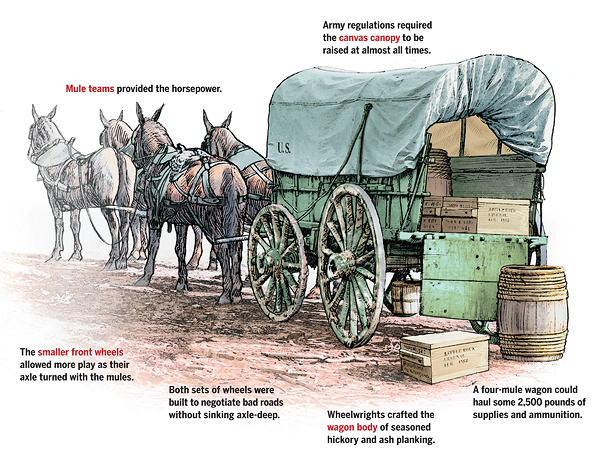
Soon after brothers Henry and Clement Studebaker set up a blacksmith shop in South Bend, Ind., in 1852, they started making wagons. Earning a reputation for quality and durability, they expanded into the manufacture of carriages in 1857. That same year they landed a subcontract to build supply wagons for the U.S. Army. In 1858 younger brother John Mohler “J.M.” Studebaker returned from California, where he had sold wheelbarrows to prospectors, and invested his profits in H&C Studebaker. To accommodate large orders that would outpace the time needed to cure lumber, the brothers devised drying kilns to accelerate the process—just in time for the Civil War.
The Studebakers were largely Dunkards—Christian pietists opposed to war—but the brothers were willing to furnish the Army with supply wagons, gun caissons and ambulances with rocker suspensions for patients’ comfort on uneven roads. By 1867 Studebaker had provided 6,000 vehicles to the Army, as well as carriages for President Abraham Lincoln and future presidents Ulysses S. Grant, Rutherford B. Hayes and Benjamin Harrison.
Studebaker continued to provide logistical support for the Army. At the 1898 outbreak of the Spanish-American War the government asked whether the company could supply 500 wagons within 36 hours. It had them ready in 24 hours. Studebaker introduced its first electric car in 1902 and its first gas-powered vehicle two years later. As World War I heated up, England, France and Russia swamped Studebaker with orders for its wagons, trucks and artillery carriages. J.M. Studebaker, the last surviving brother, died in 1917, a month before America entered the war. But Studebaker president Albert Russell Erskine soon telegrammed President Woodrow Wilson, placing the company’s resources at his disposal for the duration of the war. In spite of its success in the auto industry, Studebaker did not cease production of the wagons that had started it on the road to prosperity until 1920.




